What is Seed Germination?
Germination is the magical process where a seed transforms into a sprout or a young plant. It all starts when a seed, nestled in soil, encounters the right conditions: moisture, warmth, and sometimes light. The seed absorbs water, causing it to swell and activate internal enzymes. These enzymes trigger biochemical reactions, breaking down stored nutrients within the seed. As a result, the seed coat splits open, and a tiny root emerges, seeking nutrients from the soil.
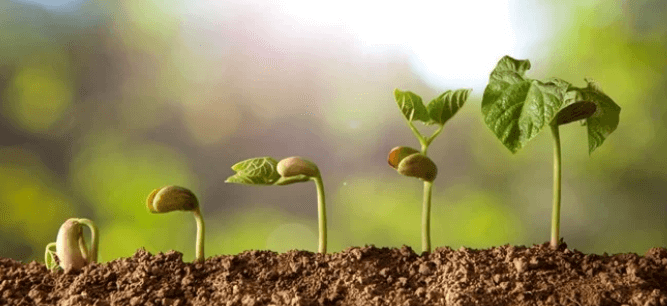
Simultaneously, a shoot pushes upward, aiming for sunlight. This shoot eventually unfolds its first leaves, powered by energy from the stored nutrients. Germination marks the beginning of a plant’s independent life, as it shifts from relying on the seed for nourishment to generating its own through Photosynthesis. It’s like nature’s alarm clock, signaling the start of a new plant’s journey towards growth and maturity.
Types of Germination of Seed
There are two main types of germination of seed namely: Epigeal germination and Hypogeal germination. These types of germinations are adaptations that plants have developed to optimize their growth in different environments.
| Types of Seed Germination | |
| Types | Description |
| Epigeal Germination | In Epigeal germination, the cotyledons emerge above the soil surface, while the shoot system grows upward, exposed to light. |
| Hypogeal Germination | In Hypogeal germination, the cotyledons remain below the soil surface, while the shoot system develops after germination, pushing up. |
Epigeal Germination
Epigeal germination is when a seed sprouts and the emerging shoot grows above the soil surface. During this process, the cotyledons (seed leaves) are lifted into the air, becoming the first green leaves of the young plant. This type of germination is common in plants like beans and sunflowers. As the shoot rises, it pulls the cotyledons with it, exposing them to sunlight for photosynthesis. This method allows the plant to efficiently harness sunlight and nutrients from the soil for early growth and development.
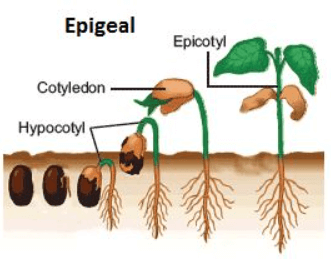
Hypogeal Germination
Hypogeal germination is when a seed begins to grow, but the emerging shoot stays below the soil surface. In this process, the cotyledons (seed leaves) remain buried while the stem elongates to push the first true leaves above ground. Plants like peas and peanuts commonly exhibit hypogeal germination. The cotyledons in this method serve as nutrient reserves for the developing seedling. This strategy allows the young plant to access essential resources while protecting its delicate shoot during the initial stages of growth.
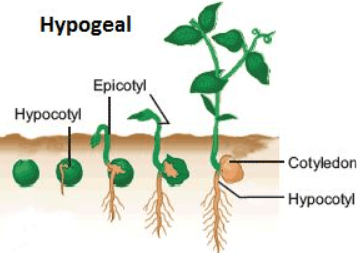
Process of Germination Of Seed
Germination is the beginning of a plant’s life. It all starts with a seed, a tiny package containing the potential for a new plant. When a seed is planted in soil, it absorbs water through its outer coat, causing it to swell and soften. This kickstarts the awakening process. The whole step-wise process of germination is discussed below.
Step 1: Seed Absorption: The process begins when a seed is planted in the soil and absorbs water through its outer coat.
Step 2: Swelling and Softening: The absorbed water causes the seed to swell and soften, initiating the germination process.
Step 3: Seed Coat Breaks: The seed coat breaks open, allowing the redicle (tiny root) to emerge and head downward into the soil for anchorage.
Step 4: Shoot Emerges: Simultaneously, a shoot begins to push upwards the surface, aiming to reach sunlight.
Step 5: Unfolding Cotyledons: As the shoot emerges above ground, the cotyledons (seed leaves) unfold, ready to collect sunlight.
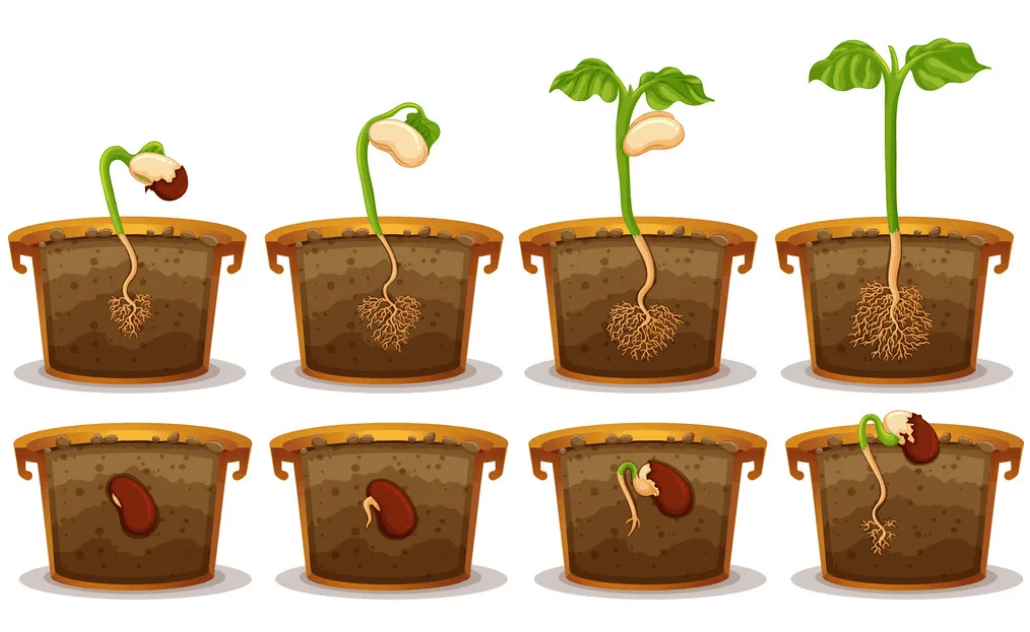
Step 6: Photosynthesis Starts: The plant begins photosynthesis, utilizing sunlight, water, and carbon dioxide to produce energy.
Step 7: True Leaves and Sturdy Stem: The seedling develops true leaves and a sturdy stem, transforming into a more mature plant.
Step 8: Continued Growth: With each passing day, the plant continues to grow and develop, fueled by the process of photosynthesis.
Step 9: Resilience and Renewal: Germination is a story of resilience and renewal, showcasing the remarkable potential within a seemingly dormant seed.
Factors Affecting the Process of Germination
Here we have discussed a few points that will help you understand the different factors that affect the process of germination. As understanding and managing these factors can optimize conditions for successful seed germination.
- Water: Adequate moisture is crucial for triggering germination, as it activates enzymes and metabolic processes within the seed.
- Temperature: Different seeds have specific temperature requirements for germination. Optimal temperatures promote enzymatic activity and metabolic reactions.
- Oxygen: Seeds need oxygen for respiration during germination. Adequate aeration in the soil ensures a sufficient oxygen supply.
- Light: While some seeds require light for germination (photoblastic), others prefer darkness. Light often acts as a signal that conditions are suitable for growth.
- Seed Quality: The viability and health of the seed affect germination. Damaged or old seeds may have reduced germination rates.
- Seed Dormancy: Some seeds have dormancy mechanisms that delay germination until specific conditions, such as temperature or light exposure, are met.
- pH Level: The pH of the soil affects enzyme activity and nutrient availability, influencing the germination process.
- Soil Structure: The physical structure of the soil influences water retention, aeration, and nutrient availability, all of which impact germination.

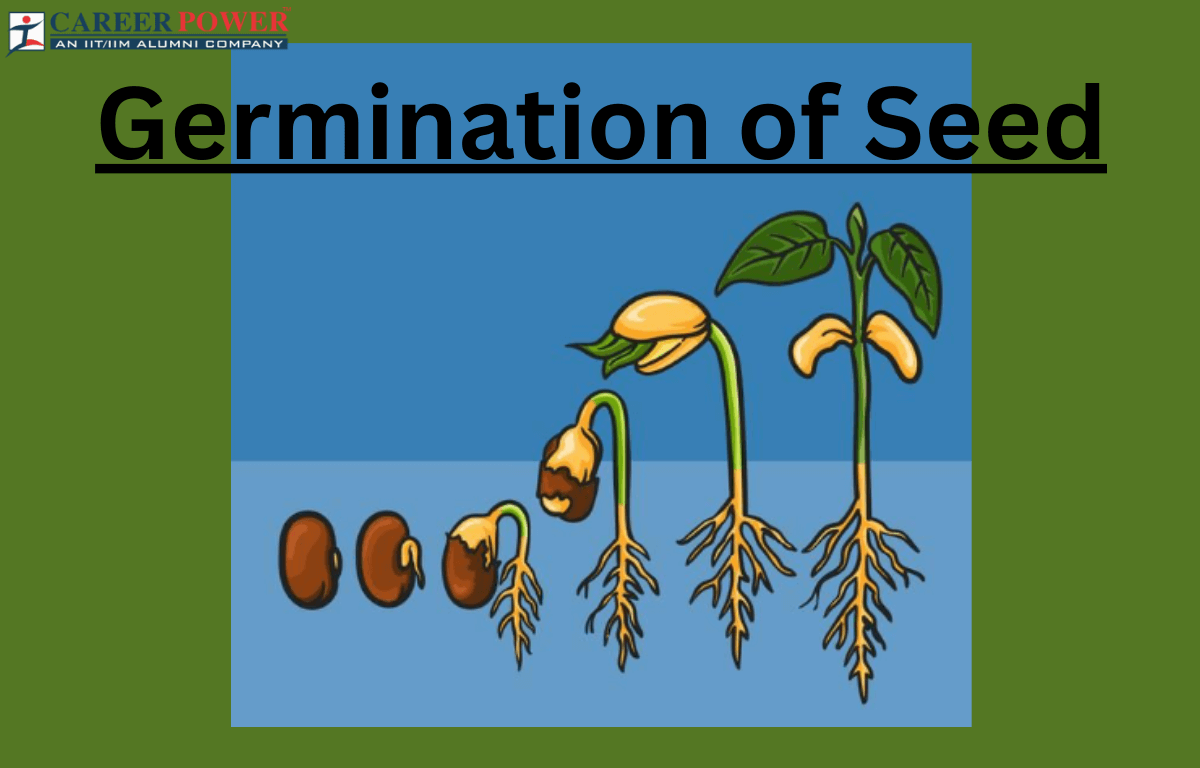

 50 Vegetables Name for Kids in English a...
50 Vegetables Name for Kids in English a...
 Food Chain: Definition, Types, Examples,...
Food Chain: Definition, Types, Examples,...
 Human Respiratory System: Definition, Di...
Human Respiratory System: Definition, Di...













